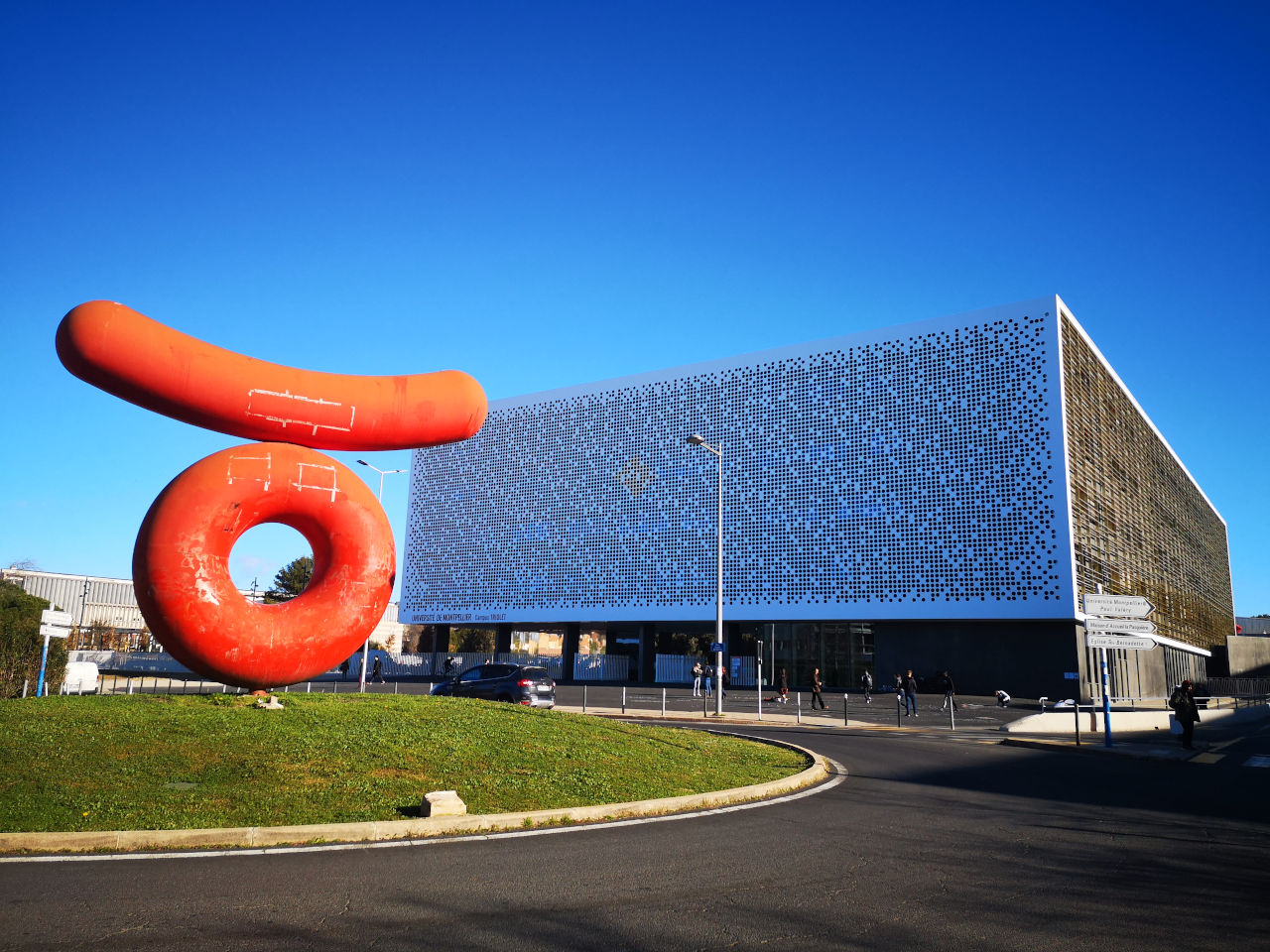Science villages: enter a new area!
In January 2020, the University of Montpellier gave its largest site, the Triolet Campus, a new face. As part of Opération Campus, this project, known as Village des Sciences, will add two new buildings to the campus.

A new entrance to the campus
Numbered 36, this first building is the new gateway to the Faculty of Science. Open to the city and crossing it, it forms a covered passageway providing access to the Triolet campus from Place Eugène Bataillon. The perforated lacework adorning its façade is a translation into binary language of the great names in the history of science since Antiquity. The five-storey, 8,660m2 building is entirely dedicated to teaching. "It comprises 9 amphitheatres, 40 lecture theatres and 9 computer rooms fully adapted to our teaching needs," explains Alain Hoffman, Director of the Faculty. There are also several living areas, a terrace, loggia and bleachers...
A building dedicated to biology and ecology
The University's identity is marked by its excellence in biology and ecology, and so it has dedicated Building 35 to them: "It brings together teaching and administrative services, previously spread over three sites, in a single hub," continues the Director. Spread over three levels, the building has 25 practical work rooms and preparation areas. "It enables practical work sessions to be organized in groups of twenty people, and meets product and equipment storage requirements in line with health and safety regulations". The building is equipped with a greenhouse, which also provides access to the campus's planted educational areas and experimental grounds.
Science and art
Visual artist Vincent Mauger has been chosen to create the ceiling of Building 36 in the Village des Sciences. His work will join the heritage acquired over the last 60 years by the Faculty of Science as part of its 1% artistic contribution: the Columns by Pol Bury (1974), the frescoes and cladding of the university library by Yvaral (1972), the tapestry by François Desnoyer (1972), and the Seven Signs of Life by Albert Dupin (1970). Also worth mentioning is the "Hommage à Confucius", commissioned in 2000 by the city's mayor Georges Frêche from sculptor Alain Jacquet, a representative of pop-art made in France. Humorously dubbed "le donut-saucisse" by generations of students, this work at the entrance to the campus is today one of the symbols of the potache spirit that also characterizes the University.
Phase B
The second phase of the project, known as Villages des sciences B, will see the demolition of the existing Building 6 and its replacement by a project with around 5,000 m2 of floor space, divided into two sections. The first, dedicated to teaching, will house the physics, computer science, mechanics and EEA (electronics, electrical engineering and automation) departments. The second complex will be dedicated to students and preventive medicine.
The construction of the Village des sciences is accompanied by a major landscaping renewal project involving the redevelopment of outdoor spaces on Montpellier's North, Triolet, Balard and Route de Mende campuses. The aim is to encourage the use of soft mobility, improve access for people with reduced mobility and, once again, make our university a place that is up to today's challenges.